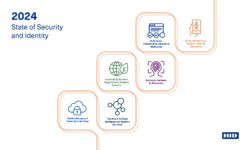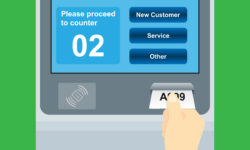2017 SSI Residential Security Market Report Reveals Smart Home Opportunities for Security Dealers
Consumers are eagerly embracing new home controls technologies and services for energy management, video monitoring, keyless door locks and more.

As market penetration continues will security firms remain well positioned? SSI’s 2017 Residential Market Report analyzes the trends.
Smart home devices such as IP cameras and video doorbells are at security’s doorstep; for some dealers, they are already firmly within their wheelhouse. Many of these devices still have low consumer familiarity when compared to broadly diffused products such as smartphones and smart TVs.
However, familiarity has at least tripled since the introduction of smart home devices through the residential security industry — real progress. New market entrants and improved iterations of existing smart home device types continue to emerge at a quick clip.
SSI’s annual Residential Market Report, researched in conjunction with Parks Associates and now in its fifth installment, analyzes the current state of smart home device awareness, interest, penetration and associated professional security dealer opportunities.
Security Dealers in Driver’s Seat
Before the security industry, via Vivint and ADT, introduced smart home adjacencies to the residential security markets in 2009, nearly all home control products were expensive and incorporated their intelligence and programmability within the walls of the home.
Central controllers communicated to attached devices or other controllers using hard wiring as a norm. User interfaces were locked into the home with remote (away from home) access unusual. Smart home devices brought the marketplace the ability to communicate with programmability via a Cloud and to transmit signals via WiFi from an established industry.
The prior availability of smartphones and tablets set the stage for portable access and alerts. They are useful and available user interfaces. Further, awareness of benefits increased more quickly due to the maturity of the residential security industry and the brand recognition of security providers, particularly ADT.
AT&T Digital Life and Comcast entrances greatly helped increase awareness. The professionally installed security industry brings another critical advantage beyond brand and benefit awareness to the marketplace: face-to-face selling.
For unfamiliar products aiming at supplanting currently working solutions as well as new functions, face-to-face allows for demonstration, explanation and prospect questions. The industry did not explode as did, for example, the iPod market, but adoption began and steady growth continues.
In looking at ownership levels of selected smart home devices at the start of 2017 (see Figure 2), what shouts out is the impact that combining these products with security systems and security-owning households has on device ownership.
Security is most frequently in owned homes (75%-80% of all installed systems), but of interest is that rates of ownership for these smart home devices are nearly equal to those of security systems in rentals and owned homes.
Of equal notice is the higher rate of adoption for smart home devices among security households: 2x to 2.5x is typical. Why is that the case? Multiple reasons come into play, with the benefits of face-to-face selling being one. Another is the relatively high income of security system households and intenders compared to the average household income of broad-band households.
In addition, while past behaviors are not guarantees of future behavior (as the investment companies tell us all the time), they are a good indicator of what matters to a household as well as a solution’s affordability. Households intent on acquiring a security system as well as those already having them demonstrate a willingness to use technology and, in 85% of installed system instances, a willingness to pay a monthly fee.
They also tend to be households familiar with, or at least unafraid of, technology solutions. The powerful contribution of the security industry to the adoption of smart home devices to date is shown in Figure 3.
Households that have acquired a security system recently (in the past two-three years) are much more likely to have at least one smart home device than earlier security system acquirers. In the years 2010-2012, 55%-70% of smart home devices were acquired at the time of acquiring a security system.
Today, nearly 70% of security systems sales include at least interactivity to the security system itself; nearly 40% include adoption of at least one smart home device, most often IP cameras and smart smoke detectors.
Smart thermostats, also showing high ownership among security system households, are somewhat less likely to be acquired from the security provider.
Challenging Changes Ahead?
The intentions for 2017 shown in Figure 4 are consumer-reported and not Parks Associates forecasts, which employ complex algorithms that include multiple factors. Parks’ forecasts range 50%-60% lower than reported intentions in most cases.
With that said, these percentages do reflect household sentiments as to the value of a product and their order of priority. As with reported ownership, intentions to acquire are nearly double for a security system household over all broadband households.
When viewing only nonsecurity households, intention percentages drop even more. The housing segmentation shows that security system broadband households are about twice as likely to report an intention to acquire a smart home device than the average broadband household.
For security dealers, this year represents opportunity seized or lost. Next year will also provide solid opportunity as householders often remain unsure of their own ability to install a smart home device. Many still want the comfort and ease of decision that accompanies using an installing dealer; however, that percentage is declining as familiarity with smart home product increases.
Dealers that want the extra revenue, stickiness or continuing reasons to upgrade customers (in other words most dealers) need to up their game. In past years, 40%-45% of intenders noted security as their potential channel choice.
The decline is caused by more options available from retail environments, both online and in-store, improvements in ease of installation, and more consumer familiarity with these products than in past years. For security dealers to keep a leading channel edge, they must carefully address pricing, allow or intend to allow integration of more products with their systems in the future, and stress key benefits.
More than six in 10 (62%) of security system intenders report that they will acquire a smart home device when they acquire their system, but as important, that they want the assurance that more devices can be added, even if self-installed, in the future.
One key benefit for devices with a security system is a single app for management; another is help in troubleshooting; and another is customer service availability to help consumers remember or relearn programming and change methods. As the marketplace expands and continues diffusion, the role of security dealers remains important, but messaging may need to shift.
Future safe messaging will become increasingly important as will dealers’ ability to showcase higher ease of usage and the potential for more meaningful analytics. SSI and Parks Associates will feature the findings of a joint survey in January to assess actual acquisition of smart home products as compared to earlier stated intentions.
Until then, view the slideshow above for the full findings from the 2017 Residential Market Report.
If you enjoyed this article and want to receive more valuable industry content like this, click here to sign up for our FREE digital newsletters!

Security Is Our Business, Too
For professionals who recommend, buy and install all types of electronic security equipment, a free subscription to Commercial Integrator + Security Sales & Integration is like having a consultant on call. You’ll find an ideal balance of technology and business coverage, with installation tips and techniques for products and updates on how to add to your bottom line.
A FREE subscription to the top resource for security and integration industry will prove to be invaluable.










[…] years ago, smart home technology was unwieldy, complicated to install and expensive, according to Security Sales and Integration’s (SSI) analysis. Things started to change in 2009, when home security providers first embraced the opportunity to […]